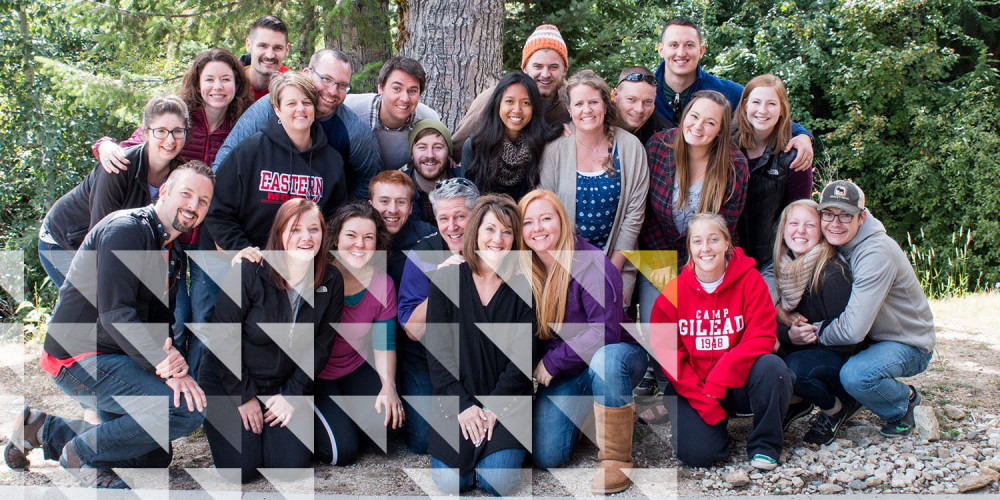
No man is an island entire of itself; every man
is a piece of the continent, a part of the main;
-John Donne, No Man Is an Island 1624-
John Dunne got it right: “no man is an island.” This is true for humanity in general, but especially for us Christians. God is in the business of redeeming for himself a people, a functioning household (Ephesians 2:19), a unified body (1 Corinthians 12:27), in short, a community. This means community is not an optional piece to the life of a disciple of Jesus; it is central. We need the people of God lovingly speaking the word of God in prayerful dependence on the Spirit of God in order to be transformed into the likeness of the Son of God, Jesus Christ. In other words, discipleship is a community project.
Nowhere in my life has this truth been brought home more powerfully than during these past seven years of serving on what we call Youth Staff: a small group of volunteers formally investing in the youth here at Faith Bible Church. Allow me to highlight this little community for a moment. In doing so, I am not giving a sales pitch to get more people to join youth ministry. I simply hope to use our imperfect example to strengthen your commitment to seek genuine community in the life of the church.
We need the people of God lovingly speaking the word of God in prayerful dependence on the Spirit of God in order to be transformed into the likeness of the Son of God, Jesus Christ.
I remember the first time I joined the youth staff for a small group night. It was the start of the Spring semester of my sophomore year of college. We were gathered in a home we affectionately labeled “The Nursing Home” due to the number of nurses who lived there. And I can remember the sense of fear tinged eagerness that accompanies meeting a whole bunch of new people. But that night I didn’t just meet people. I was introduced to a way of doing community that would prove transformational in my life. On the surface there was nothing exceptional: just some food, conversations, singing, Scripture study, and prayer. But within this normal structure I found a living community. The personnel and location changed over time, with some seasons ‘clicking’ relationally more than others. But a living community it remained. As I’ve reflected on these years in youth ministry, I can’t help but ask what made this seemingly normal small group environment so helpful. None of us were individually that special (though there were some seasoned and wise people in the mix). Most of us were in a seemingly constant state of neediness and instability. So, what was it that made it so helpful? At least three realities stand out as significant influences.
For starters, we spent the time necessary for relationships to flourish. We worshipped together on Sundays, served together on Wednesdays, and invested every-other Friday night in small group. We had retreats together and spent ourselves at youth camps and overnighters together. And on top of all of the programed time we would have each-other over for meals and game nights. In other words, we spent lots of time with one-another. This time meant that we were able to get past facades and see one-another free from behavior altering performance. It wasn’t always pretty. But we got the real picture. Real relationships take time to cultivate. Admittedly, in most situations this sort of time together takes a lot of intentionality to make happen. But it is so necessary.
Secondly, our little community seemed to flourish because of our shared pursuits. In his book The Four Loves C. S. Lewis talks about how real friendships are formed at the moment when two or more people realize that they are loving or pursuing the same thing. Musicians tend to befriend musicians. Basketball players befriend basketball players. Moms befriend moms. Friendships flourish where there is a common pursuit. In our case, people who wouldn’t have otherwise become great friends were drawn together because of our pursuit to know Christ and the serve the students. The more we realized our common pursuits, the closer we became. Don’t get me wrong, this did not mean we were all best friends all of the time. We were sinners who offended and annoyed one-another. But our common pursuit as disciples and disciple-makers held us together. As we kept our eyes on the goal of knowing and showing Jesus, we came to know and love one-another.
Finally, as our little community spent lots of time together pursuing the same goal, we flourished in so far as we gave each other freedom to speak truth to one-another. The apostle Paul lays this paradigm out for us in Ephesians 4:15: “Rather, speaking the truth in love, we are to grow up in every way into him who is the head, into Christ.” That phrase ‘truth in love’ is crucial for real community. As we grew to know both Christ and each-other, we grew more capable of speaking the right truths at the right time in the right, loving way. This is really where the idea of community meets reality. We need the people of God lovingly speaking the word of God in prayerful dependence on the Spirit of God in order to be transformed into the likeness of the Son of God, Jesus Christ. As we gave each other freedom to say hard things in love, real community flourished. No doubt this sort of vulnerability is dangerous. If you open your life up to another sinner you are going to, at times, feel hurt. But if growing up in every way into Christ-likeness is the goal, then speaking the truth in love is the only path. We need community, because we need one-another to become like Jesus. This reality has proven true in my life. I pray you will experience the same.

Josh is a graduate of The Master's Seminary Spokane. He and his wife Nicole enjoy reading novels together and spending time outdoors.
View Resources by Josh Sturm
